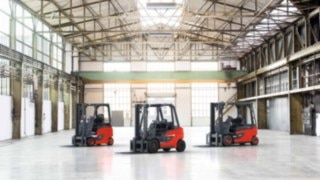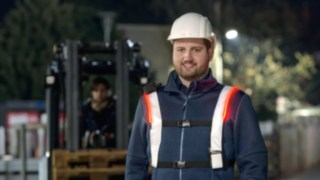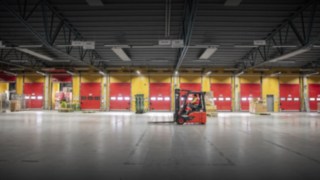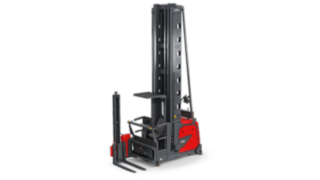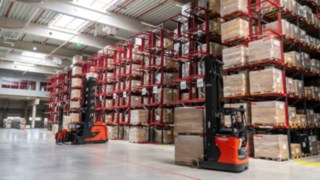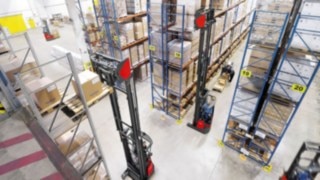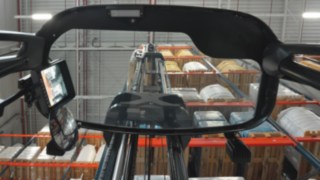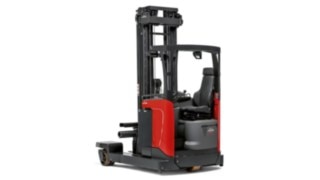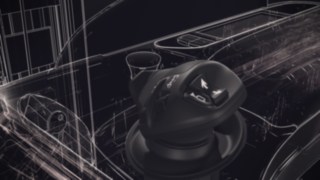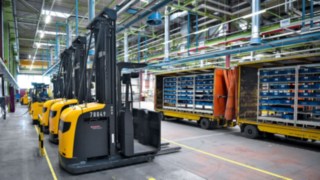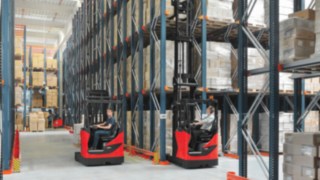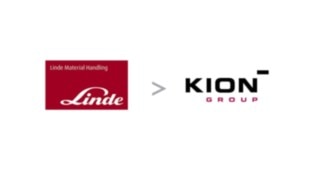19th VDI Industrial Trucks Conference 2017
The future of industrial trucks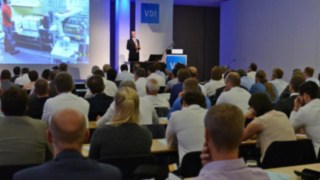
The 19th VDI conference for industrial trucks took place in Baden-Baden on 19 and 20 September. The focus was on automation, driver assistance systems, battery technology and occupational safety. Alexander Schmidt, Senior Product Manager for reach trucks and tractors at Linde, also gave a lecture. He explained the Dynamic Mast Control assistance system and illustrated its advantages for goods handling.
Three questions to...
Alexander Schmidt - Dynamic Mast Control for reach trucks
What challenges do you see for your customers in load handling?

Alexander Schmidt, Senior Product Manager Reach Trucks & Tow Trucks

Alexander Schmidt, Senior Product Manager Reach Trucks & Tow Trucks
Our customers often have to cope with an increasing variety of goods. The variety of articles is exploding. In order to have the space for storage, the racks are getting higher and higher. Particularly when handling loads at great heights, the driver often has to deal with strong mast oscillations. Today we offer reach trucks up to a height of 13 meters. At such a height, two factors influence mast stability: on the one hand, the strong swings caused by the forward and backward movement of the mast and, on the other hand, the static forward deflection of the mast caused by the load itself. Linde therefore offers the Dynamic Mast Control (DMC) driver assistance system. This counteracts the oscillations as well as the deflection, stabilizes the mast and thus increases the safety of the driver and accelerates the load handling.
How does the Dynamic Mast Control driver assistance system work?
The question during development was, how do mast and load behave at certain heights and how can the swinging motions be compensated? When using DMC, a particularly fast-reacting, electric reach drive is used. With this drive, the system counteracts both destabilizing factors: oscillations caused by moving the mast and manoeuvring are compensated by targeted counter-movements of the reach. DMC also counteracts static mast deflection by means of the reach drive. The more the mast bends, the further it is automatically retracted. This makes it easier to handle loads in a perpendicular manner and is thus unique on the market.
DMC works with sensors at the mast. These record the oscillation movements and measuring units register the current lifting height and weight. These data are processed in the electronic control system and corresponding signals are transmitted to the reach drive. The system works completely in the background and compensates all unwanted mast movements effectively and almost without delay. This not only reduces damage to the load, the vehicle or the shelf, but also increases productivity significantly.
What additional advantages does the system offer?
In addition to the already mentioned advantages of better safety for the driver and the load as well as increased productivity, Dynamic Mast Control is a system that helps to use warehouses more efficiently. Until now, heavy loads have only been stored in the lower shelves. With the Dynamic Mast Control it is now possible to store heavier loads at higher heights. The effect is impressive at a height of just 8-9 metres. Another aspect is the advancing automation. Precision plays a decisive role in automated vehicles - we can ensure this to a large extent with such a system.
